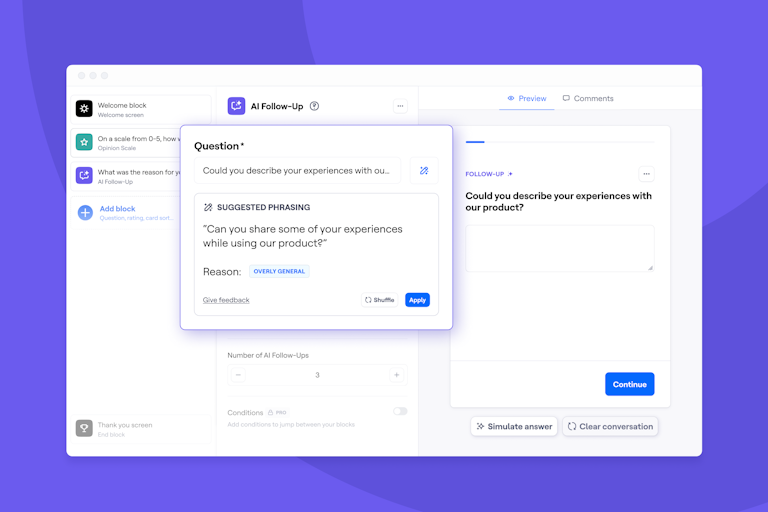AI is speeding up processes across a wide variety of product development practices—and UX research is no exception. With the right AI companion, product teams can find new ways to optimize insight collection and inform product decisions with user insights.
From participant recruitment to optimizing analysis, UX professionals have a whole host of AI tools to choose from—but finding the right tool to balance your team’s budget and needs can be tricky. To speed up your selection process, we’ve scoured the top tools and listed our top eight in this rundown.
How to use AI in user research
AI currently supports UX professionals in a plethora of ways, from generating new content, analyzing vast amount of user research data, and providing predictive insights, to optimizing processes and streamlining workflows.
It’s continually evolving—meaning more and more applications of AI in research are emerging as the technology develops. For example, initial applications of AI in UX research only allowed text generation, but now UX professionals can generate visuals with AI, too.
However, worry not—AI isn’t here to replace you.
“Currently, AI tools play more of the role of research assistance,” says Yelin Jo, UX Researcher (PSP) at Starbucks.
At Maze, we agree. AI should be used to support your user research methods—think of it as the trusty sidekick to your superhero.
Artificial intelligence has the power to transform your entire UX research process through automation, content generation, data analysis, and more. You can use it any and all stages of the user research process.
We most frequently use AI in survey automation and rapid data analysis—quantitative research methods are the most common ways we try using AI.
Yelin Jo
UX Researcher (PSP) at Starbucks
Share
Types of AI research tools
As AI and UX research combine, many new AI tools enter the marketplace to provide better insights and make work easier. Here are some of the different types of tools helping UX professionals create better user experiences:
Benefits of using AI-powered tools in the UX research process
Integrating AI-powered tools into your research workflow allows for a transformative approach to research and UX design. Here are just some of the benefits of using AI in your UX research process:
- Rapid analysis: Handle vast datasets in moments, accelerating the shift from raw data to actionable insights
- Personalization: Employ AI to create customized experiences that resonate deeply with users, improving customer adoption, engagement, satisfaction, and retention
- Scalability: Quickly grow your AI-powered applications and capabilities to meet the increasing needs of your UX research process, enabling you to scale operations quickly and efficiently
- Optimized workflows: Automate mundane tasks and complex processes with AI-powered workflows to speed up and simplify your day-to-day research projects
8 Best AI tools for user research
Adding some AI-powered tools to your UX research process can make a big difference—whether it's taking care of repetitive tasks or digging deeper into user behavior. Here are our top eight AI-assisted tools for UX research, and what they’re best for.
1. Maze: Best overall for remote, AI-assisted user research
Maze—the continuous product discovery platform empowering teams to conduct in-depth, remote user research—offers AI solutions to improve the user research process. It’s ideal for teams looking to blend human expertise with AI efficiency.
Maze AI can help speed up the data collection and analysis process, providing in-depth insights for informed design decisions. Automating little and often throughout the research process allows your team to focus on creative and strategic aspects of UX design, fostering a user-centric design process.
Matthieu Dixte, Product Researcher at Maze, shares how he uses Maze’s AI capabilities to enhance his research work: "I use Maze AI primarily for refining question formulations, simplifying research summaries, and auto-coding survey results to quickly visualize key themes. Using AI here saves me a lot of time to focus on more strategic analysis."
Key AI features
- The Perfect Question: Fine-tune your questions, eliminate bias, and avoid grammatical errors with AI—ideal when you're looking to craft well-structured UX research questions
- Dynamic Follow-up: Let AI craft personalized follow-up questions and delve deeper into user feedback in unmoderated surveys
- Smart Renaming: Generate descriptive names for your mazes based on their content to help everyone quickly understand the focus of each study
- Sentiment Analysis: Automatically categorize responses as positive, neutral, or negative when sifting through open-ended responses to tag sentiment and gauge overall user perceptions
- Conversation Summaries: Have AI highlight key takeaways and break down interviews to share insights with stakeholders
Pricing
Maze offers pricing options for organizations and product teams of all sizes, including a free plan for a taste of what’s possible with Maze. The Starter plan comes in at $99 per month and provides added features and greater flexibility, while custom pricing for the Organization plan includes extra studies and additional solutions, like Card Sorting and Tree Testing.
2. QoQo: Best for generating user personas
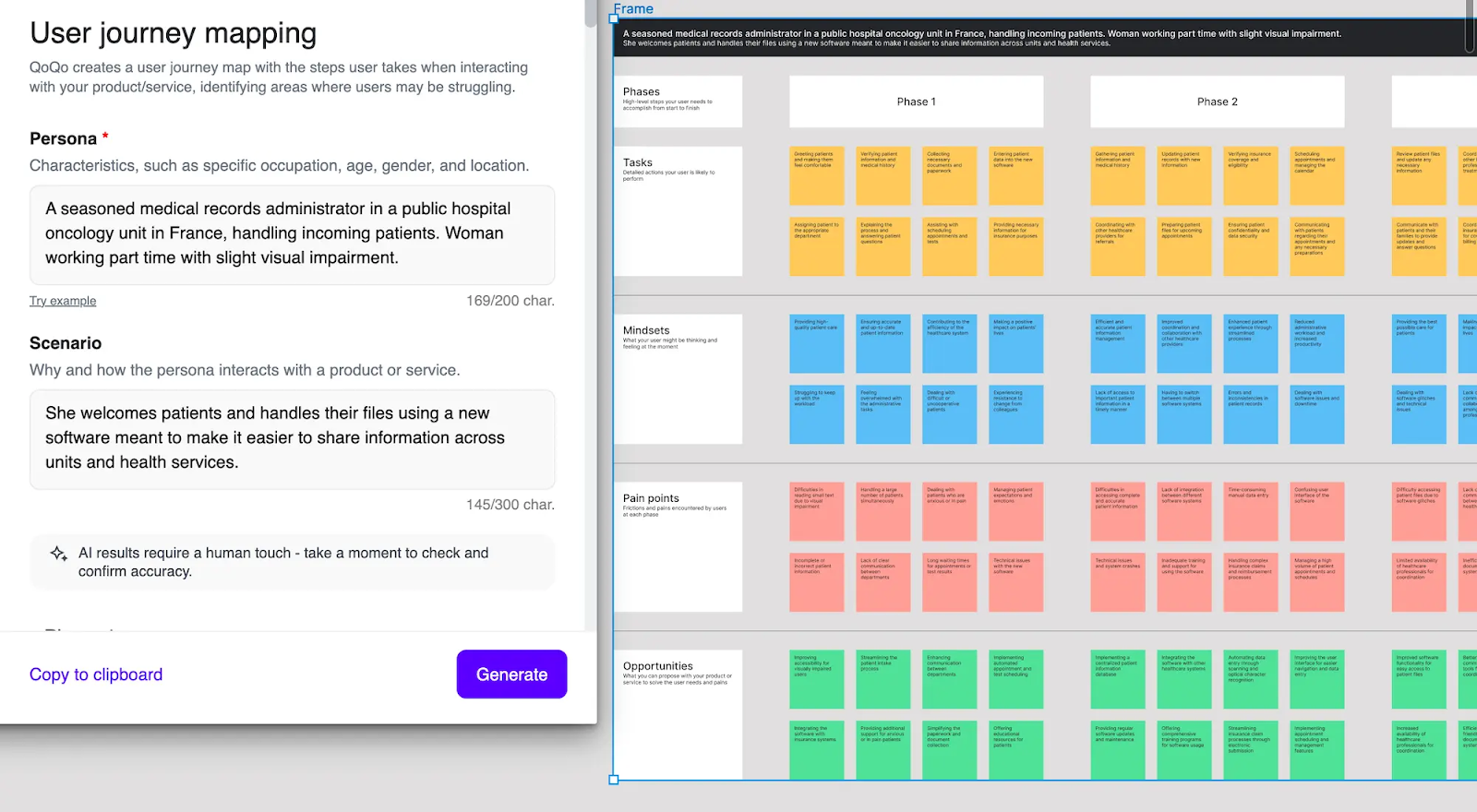
QoQo is a great AI companion for UX designers and offers a structured method of user persona generation. When you provide input—like demographic data or user behaviors—QoQo creates UX personas that capture user goals, needs, motivations, frustrations, and tasks. Of course, they’re not perfect—but AI-generated personas are a great starting point.
Key AI features
- Persona creation: Generate cards that focus on user goals, needs, and motivations
- Task identification: Identify user journeys and interactions to prioritize and tailor design elements
- Design brief elements: Form well-structured design briefs that align with both user needs and project goals
Pricing
QoQo offers a suite of user experience tools, including persona generation and journey mapping, for $15 per month. There’s also a 2-day free trial so you can try before you buy.
👥 Not sure where to start with user personas?
Check out our free user persona template here.
3. Synthetic Users: Best for simulating realistic user interactions
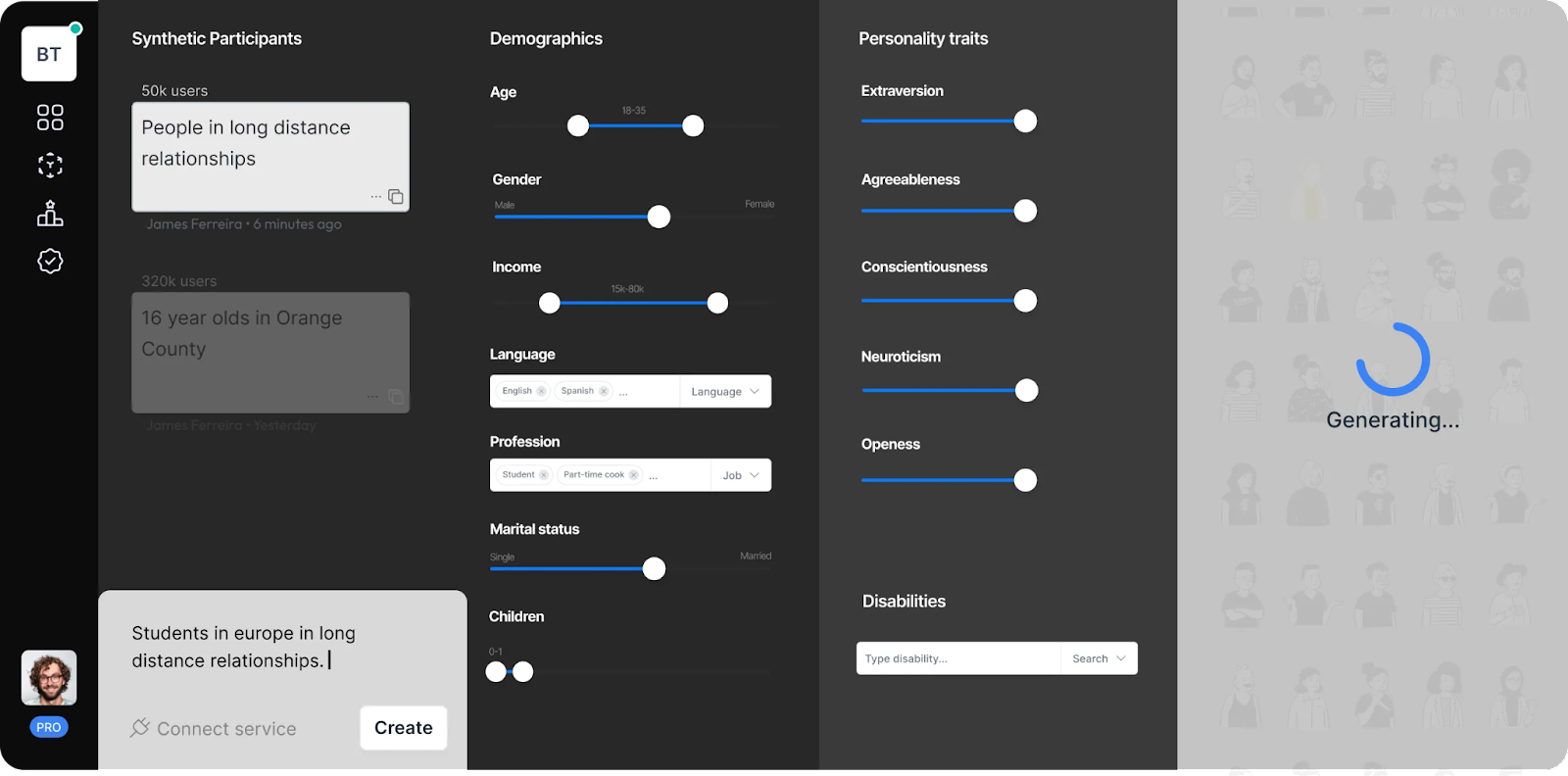
Synthetic Users offers AI-driven virtual research participants that simulate real user behavior and preferences. Create synthetic participants based on everything from demographic data to Myers-Briggs personality traits, then watch these artificial participants interact with your designs in a controlled yet realistic testing environment. While we wouldn’t recommend user testing solely with virtual participants, it’s a useful way to check tests, ensuring precise evaluations and iterations before you engage with actual users.
Key AI features
- Targeted audience testing: Identify how different user segments interact with a product and provides valuable insights into user preferences and behavior
- Organic insight generation: Get detailed feedback and refine products continuously
- Cost-effective user testing: Reduced cost per user interview makes it accessible for a wider range of research projects, regardless of budget constraints
Pricing
Synthetic Users offers a free plan for up to 10 interviews per user/month. The paid plans offer additional interviews, starting at $480 for a 100 Interviews Pack and rising to $1250 for a 500 Interviews Pack.
4. Neurons Predict: Best for forecasting customer responses
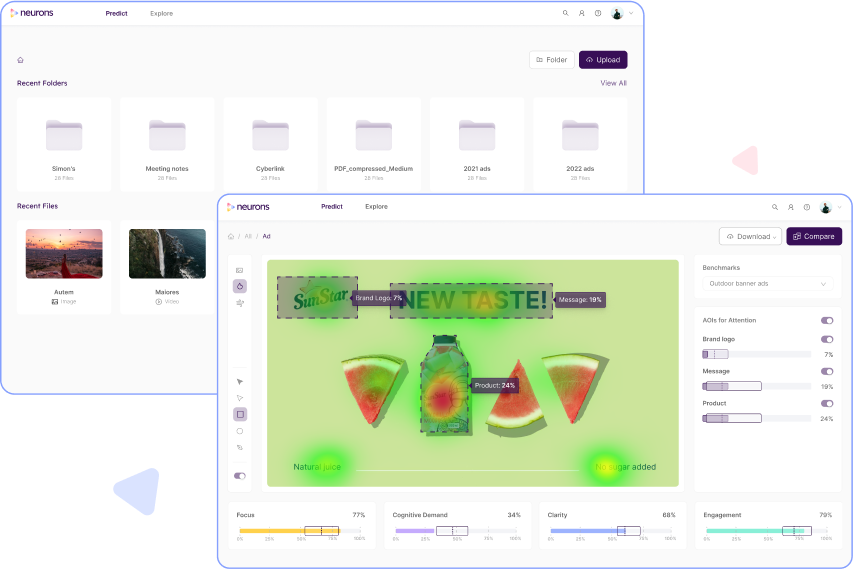
Neurons Predict, developed by Neurons Inc., empowers user research by accurately predicting customer responses. It uses eye-tracking simulations, heatmap preference tests, and an extensive dataset from real consumer responses to identify how users interact with or respond to different visual elements.
Key AI features
- Attention analysis: Measure and analyze user attention on visual assets to identify areas of interest and focus
- Cognitive scoring: Assess cognitive engagement and processing with focus score for attention, cognitive demand score for mental effort, clarity score for understandability, and engagement score for user interaction
- Visual asset analysis: Quickly test and compare attention across various creative elements
Pricing
Neurons Predict doesn't currently list pricing on its website, but you can reach out to them for custom pricing. Some sources suggest pricing starts around $5000 per year, not including the set up fee.
5. Ando: Best for automating design tasks in Figma
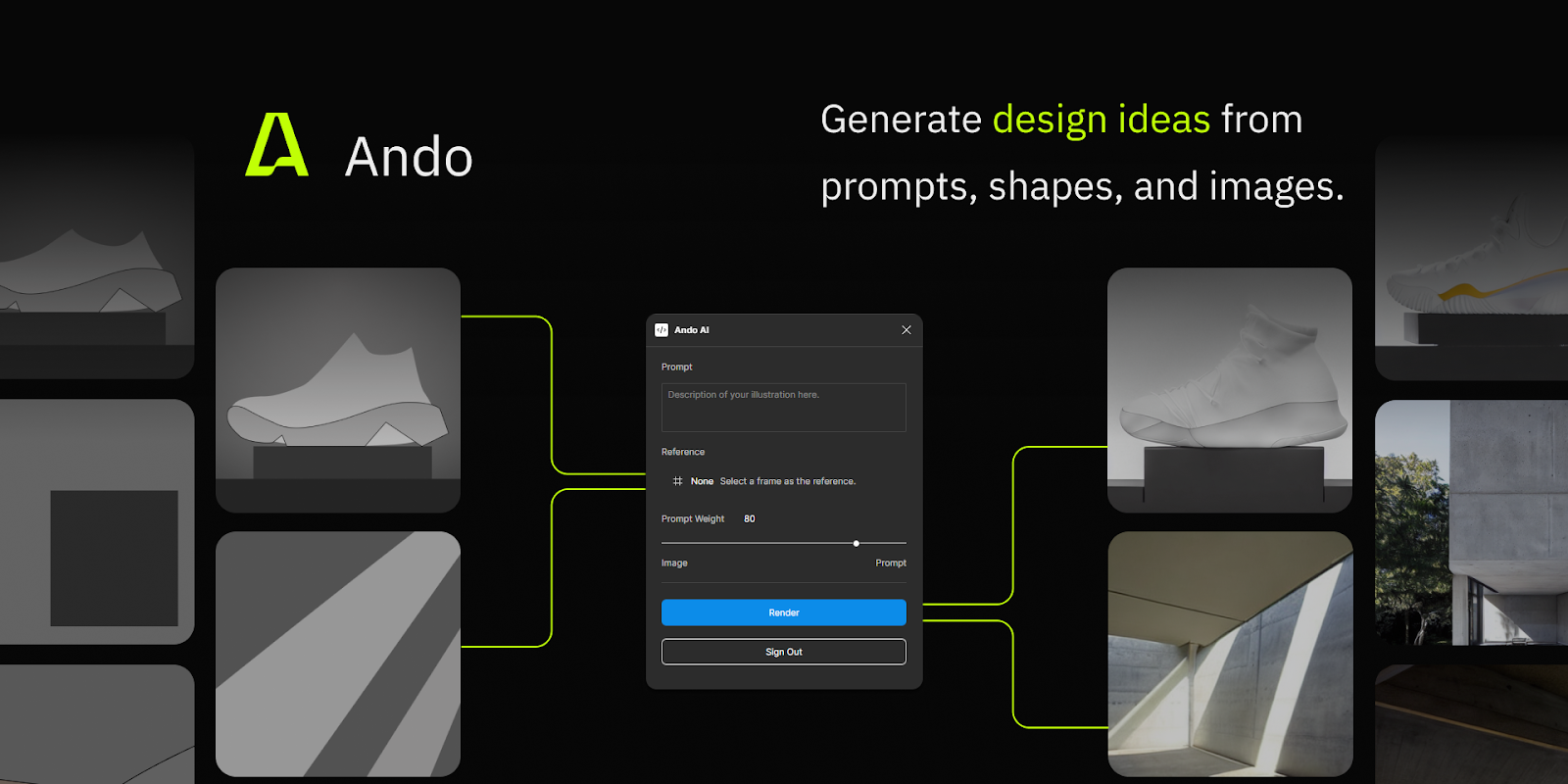
Ando is an AI co-pilot that makes the design process more intuitive and efficient. It uses machine learning to generate design ideas and offers creative suggestions directly within the Figma environment.
Key AI features
- Automated design tasks: Free up your team's creative energy by automating routine design tasks
- Font pairing suggestions: Let Ando recommend font pairings that both save time and enhance your design's readability
- Image generation: Empower your team to generate images from simple descriptions or prompts
Pricing
Ando is a free Figma plug-in—simply install it and you’re good to go.
6. ChatGPT: Best for generating user journey narratives
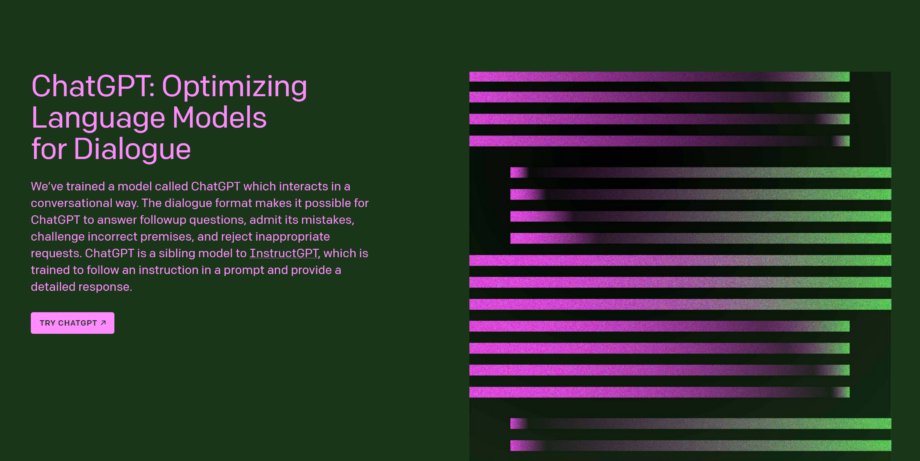
Now for one you’ve definitely heard of—ChatGPT. OpenAI’s natural language processing (NLP) model creates human-like text, based on the prompts you give it. It's ideal for generating persuasive UX copy, crafting user journey narratives, or producing engaging content for your interfaces.
Key AI features
- Content customization: Tailor content to meet specific user preferences or demographic characteristics, enhancing relevance and engagement
- Content variation: Create a variety of content versions and run A/B testing to find what resonates best with your audience
- Multilingual content creation: Expand your reach by generating content in multiple languages, catering to a diverse user base
Pricing
ChatGPT is free, but you can upgrade to the paid plan for $20 per month to get faster response times and priority access to new features and improvements.
7. Notion AI: Best for streamlining reporting
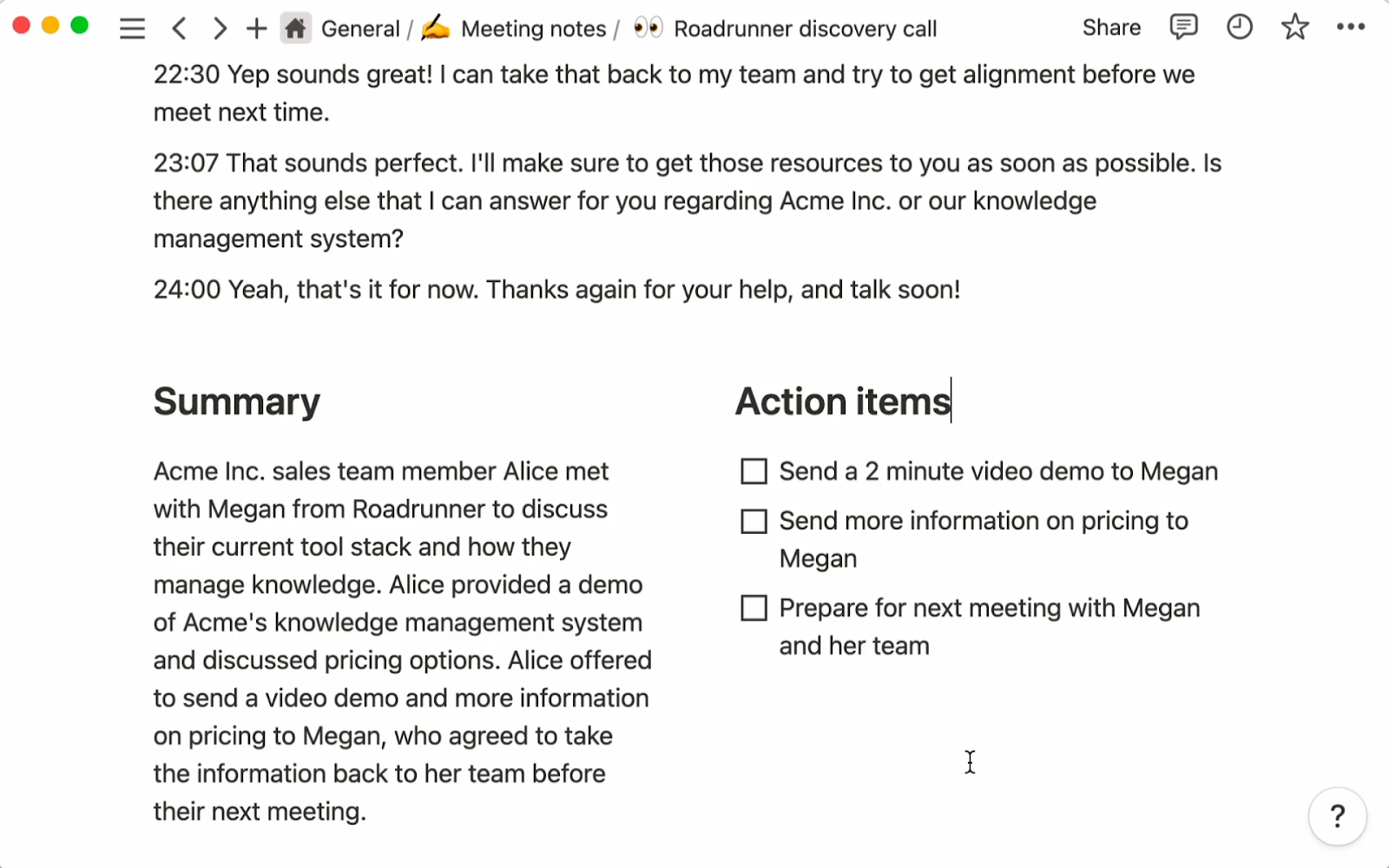
Notion AI enables you to improve existing content, generate summaries, and draft new text within Notion. It automates tasks, predicts results, and generates content outlines and summaries from a single line of text.
Key AI features
- Automated content generation: Quickly generate outlines or draft texts from a single line of input
- Intuitive text improvement: Improve existing content by highlighting text and selecting the 'Ask AI' option for suggestions
- Summary and insight extraction: Use special AI blocks like '/summarize' and '/action items' to generate summaries and extract action items from meeting notes or transcripts
Pricing
Notion AI is available as an add-on to existing Notion plans, starting at $10 per member/month.
8. Recraft AI: Best for rapid vector art prototyping
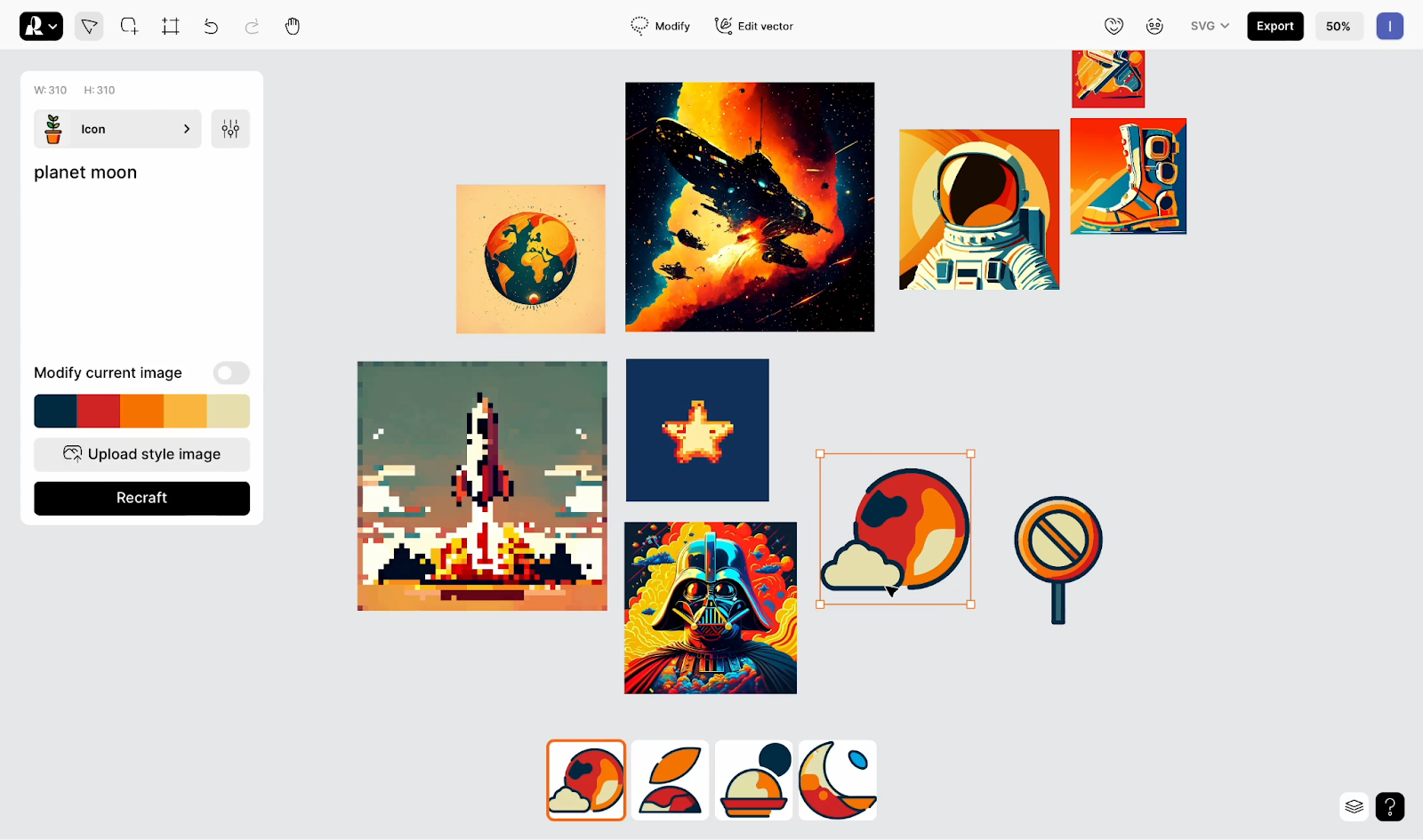
Recraft AI offers an AI artboard for generating and editing vector art, icons, 3D images, and illustrations. You can edit vector art, icons, and illustrations for rapid prototyping and refine visuals based on user feedback or project requirements.
Key AI features
- Palette precision: Add brand colors to create images with the identical, on-brand palettes, ensuring consistency across your designs
- Vectorizer: Convert any illustration into a vector and guarantee high-quality output with less manual effort
- Text-to-image: Convert sentences or text into visual images and high-quality prints with SVG resolution
Pricing
Recraft AI offers a free plan that enables you to generate images that are stored in the public library. The paid plan costs $25 per month and provides faster image generation and a private gallery.
Best practices for using AI tools in UX research
One thing’s for sure when it comes to AI—the more info you give it, the better the output you receive.
Matthieu Dixte, Product Researcher at Maze, suggests, “instead of leaving AI to generate from scratch, give it precise prompts makes its output more relevant and precise.”
Here are some more actionable best practices to ensure you’re maximizing the potential of AI tools without compromising on research quality:
- Regularly validate: AI is a great starting point, but it’s not foolproof. Frequently cross-check AI-generated insights with human analysis to ensure accuracy and relevance. Don’t be afraid to double check AI data.
- Prioritize privacy: Trust is of the utmost importance when interacting with AI—building trust from your user is a delicate process, so don’t let AI jeopardize that. Always anonymize and protect user data, maintaining compliance with any relevant certificates or data laws.
- Stay updated: AI tools evolve rapidly—ensure you're using the latest versions and are aware of new features or capabilities to avoid falling behind competitors, or using an outdated feature which holds up product development.
- Educate others: There’s a lot of misconceptions surrounding AI, and caution around its use in UX research—consider spending time with other teams and stakeholders sharing how you use AI in your workflow, or highlighting the possibilities it presents. The more others understand AI, the more confident they’ll feel using or endorsing it.
How to choose an AI tool for user research
So, with all these options, how do you find the right tool for you and your team?
Here are some key considerations to keep in mind when making your decision:
Align AI tools with business objectives
Make sure your chosen tool can support your business objectives. If analyzing user feedback is holding you back and hindering decision-making, find an AI tool that speeds up the process. If UX copy creation is stopping you shipping new features and acquiring new users, opt for an AI tool that can help generate copy.
Here are some thoughts from Yelin Jo, UX Researcher (PSP) at Starbucks:
“To begin with, businesses should be well aware of what their business objective is and how AI could help with achieving the outcome. The expected return must be in sync with your investment in the AI tool to make it worthwhile.”
Prioritize versatile AI tools
Your main goal is finding an AI tool that helps solve the problem you’re experiencing—whether that’s inefficient workflows, a lack of design resources, or something else.
However, it’s a good idea to also consider secondary benefits provided by AI tools. Think about whether the AI tools you’re comparing offer additional features that could benefit other areas of your UX design process.
For example, Maze AI offers a number of different AI solutions: not only can you optimize UX surveys with the Perfect Question feature and generate dynamic follow-ups, but you can also use AI to analyze moderated interview studies andextract key themes.
Check compliance and data privacy
Does your chosen tool provide the data security measures you require? Review the tool’s data handling practices and encryption methods to ensure they adequately protect your (or your users’) data. You also need to consider if the tool abides by local data protection laws, industry standards, and ethical guidelines. Otherwise, you risk damaging the customer relationships you’ve spent so long building and developing.
Overall, when creating your ideal AI-powered UX research tech stack, prioritize tools that are intuitive, provide valuable insights, and have reliable support in case you need assistance. While you don’t need every tool on our list, you’ll find some great combinations and collaborations when it comes to harnessing the power of AI.
Maze’s AI functionalities ensure that each step in your research process complements your UX/UI Design tools, usability testing tools, and product discovery tools. Plus, you get access to 50+ pre-built research templates and integrations with popular design tools like Figma, Sketch, and Adobe XD—and the ease of exporting digestible reports, positioning your team to make data-driven decisions confidently.


